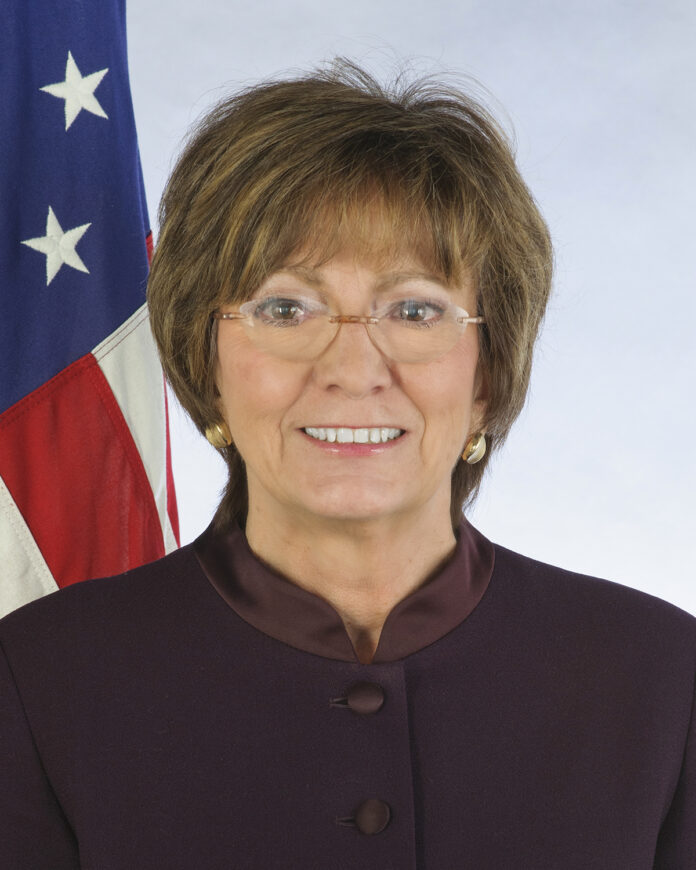Statement by U.S. Ambassador Linda Taglialatela
Like you, I miss getting out of the house and visiting with friends and colleagues. I miss the Easter celebrations of previous years and the buzz around Sailing Week. My thoughts are too with my brothers and sister in the United States, where the epidemic has ravaged communities and pushed my home state of New York to the limit. I pray for the thousands of families in the Caribbean, the United States, and throughout the world who are grieving the loss of loved ones to COVID-19. The latest reports indicate more than 139,000 people, including 29,000 Americans, have died.
The Martin Luther King, Jr. Memorial in Washington, DC, surrounded at this time of year by the blooms of hundreds of cherry trees, is inscribed with the words: Out of the Mountain of Despair, a Stone of Hope.
Those words from MLK’s 1963 “I Have a Dream” speech have taken on greater meaning for me during this pandemic. I find hope in the innovative ways American and Caribbean residents are coming together as communities to support one another, though still keeping six feet apart. I find hope in the U.S. companies that are retooling their factories to produce ventilators and personal protective equipment. I find hope in how Americans and our local and federal governments are leading the fight against COVID-19. These efforts build on a decades-long foundation of American expertise, generosity, and planning. We believe it is the right thing to do, and we also know that pandemics don’t respect national borders. If we can help countries contain outbreaks, we will save lives abroad and at home in the United States.
That generosity and pragmatism explains why the United States was one of the first countries to help the Chinese people as soon as reports emerged from Wuhan of an outbreak. In early January, the United States government offered immediate technical assistance to the Chinese Centers for Disease Control. In the first week of February, the United States transported nearly 18 tons of medical supplies to Wuhan provided by Samaritan’s Purse, The Church of Jesus Christ of Latter-Day Saints, and others. We also pledged US$100 million in assistance to countries to fight what would become a pandemic – including an offer to China, which was declined.
Our response now far surpasses that initial pledge. Since the outbreak of COVID-19, the U.S. government has committed nearly US$500 million in assistance. This funding will improve public health education, protect healthcare facilities, and increase rapid-response capacity in more than 60 of the world’s most at-risk countries. The United States continues to be the single largest health and humanitarian donor for both long-term capacity development and emergency response. We want to ensure that commitment is a shared international responsibility and that our contribution is used effectively, but that does not change the fact that America funds nearly 40% of the world’s global health assistance programs, adding up to US$140 billion in investments in the past 20 years – five times more than the next largest donor. This money has saved lives, protected people who are most vulnerable to disease, built health institutions, and promoted the stability of communities and nations.
In Antigua and the Eastern Caribbean, that means U.S. funding supports the modeling and forecasts of the University of the West Indies to help us understand when it will be safe to return to work, to school, or to church. U.S. aid funds the training of medical professionals who test for COVID-19 and establishes protocols in health care facilities to protect against the spread of the disease in these critical institutions. With health ministries around the region, we are paying for contact tracing to reach out to family and friends before the virus does. U.S. health assistance will help save lives in the countries that I have called home for more than four years.
Our help is much more than money and supplies. It is the experts we have deployed worldwide, and those still conducting tutorials today via teleconference. It includes trained doctors and public-health professionals who have studied at American educational institutions through U.S.-funded scholarships or participated in U.S. government exchanges. It is people like Michael Joseph, who just off his leadership at the Red Cross, is now working assiduously with U.S. courier companies to ensure the availability of medications, or Joy-Ann Harrigan and her team at the Special Education Needs Unit of the Ministry of Education who are preparing a hygiene and prevention program for some of society’s most vulnerable young people. It is not only our government helping the world either. American businesses, non-governmental organizations, and faith-based organizations have given at least US$1.5 billion to fight the pandemic overseas, including U.S. citizens and American organizations and companies I’ve seen featured in the press every week.
These are the stones of hope. Some are measured in dollars signs. Some are easily photographed. Many are not. The truth is the United States will aid others during their time of greatest need. The COVID-19 pandemic is no different. We will continue to help countries build resilient health care systems that can prevent, detect, and respond to infectious disease outbreaks. Just as the United States has made the world more healthy, peaceful, and prosperous for generations, so will we lead in defeating our shared pandemic enemy, and rising stronger in its wake.
